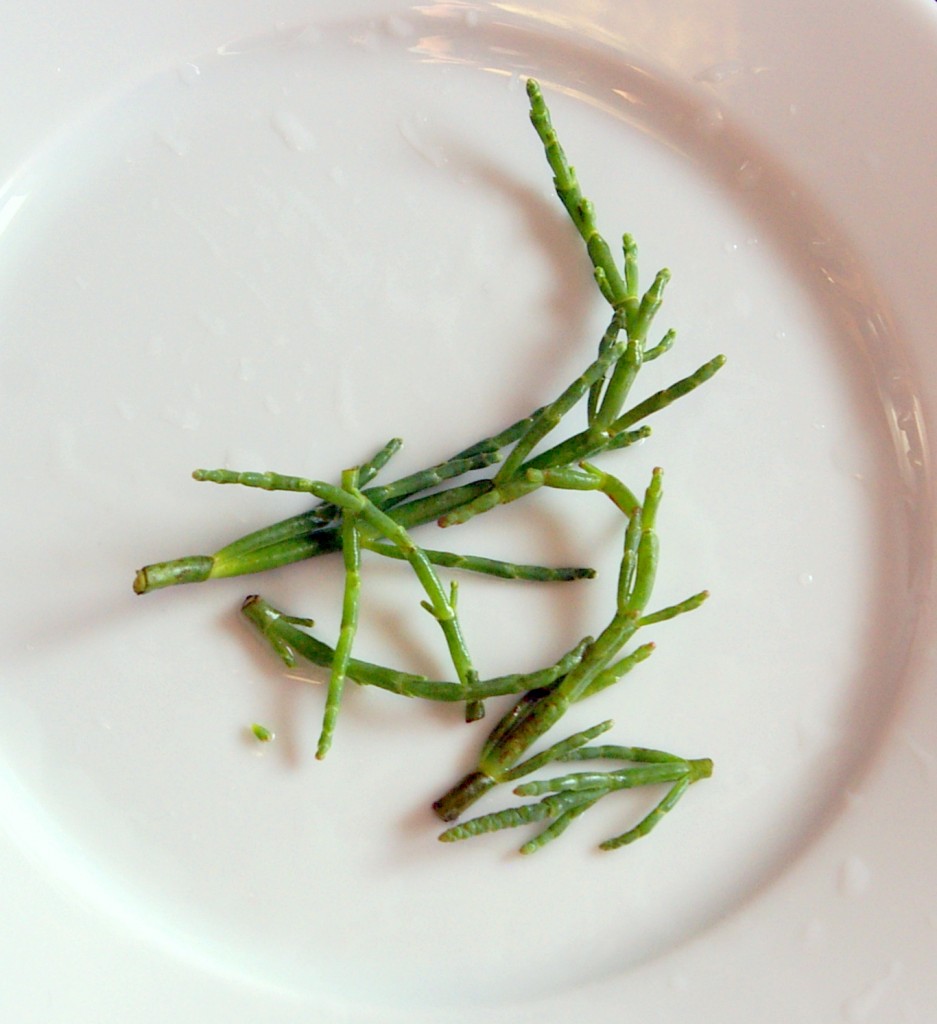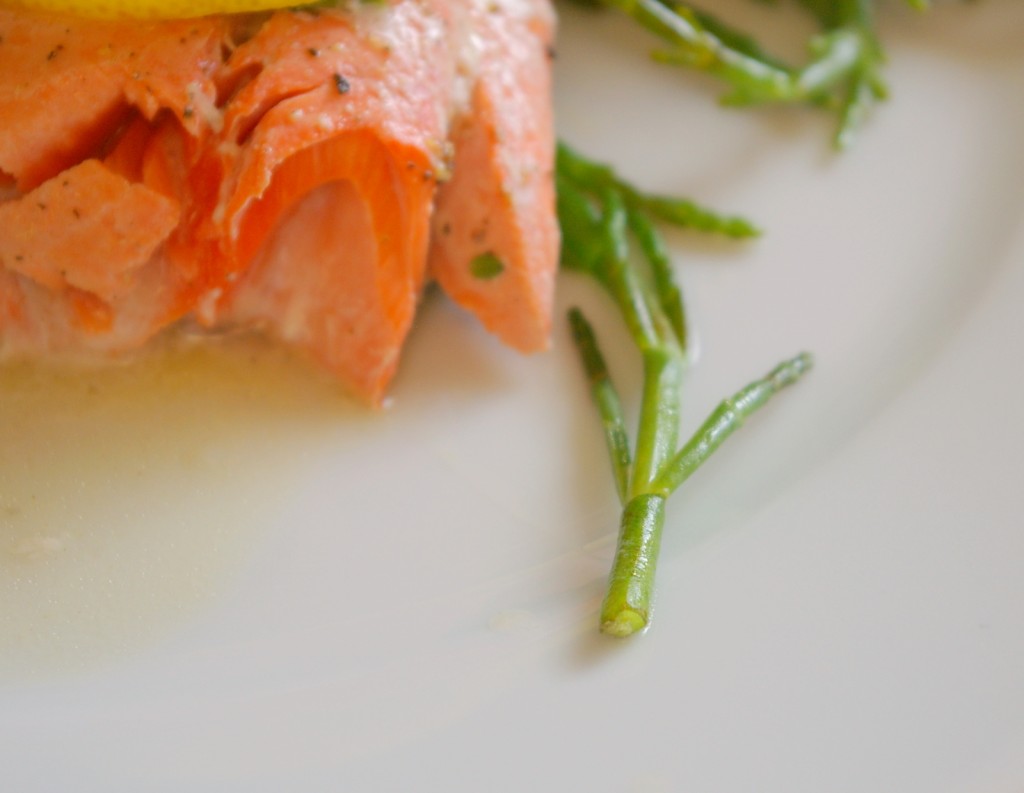A Few of My Favorite Things: Samphire
Two summers ago, I had samphire for the first time. ûô I was a teaching assistant for a Shakespeare course and having a nice dinner in Stratford-upon-Avon and with a fellow T.A. when I bit into an an amazing, salty vegetable. ûô My waiter called it samphire, which sounded delightfully exotic. ûô Then I remembered watching King Lear the week before and hearing the lines:
Come on, sir; here’s the place: stand still. ûô How fearful
And dizzy ’tis, to cast one’s eyes so low!
The crows and choughs that wing the midway air
Show scare so gross as beetles: half way down
Hangs one that gathers samphire, dreadful trade!
Methinks he seems no bigger than his head. (4.6.15-20)
Edgar says these lines to Gloucester as he peers over one of Dover’s cliffs and sees an unlucky man gathering Rock Samphire. ûô Thus began my love of samphire!
The salty annual you see pictured above is Marsh Samphire, which grows as an annual in marshy regions of the United States and England. ûô It’s best to forage samphire during the spring and summer, although I found these at the Ballard Farmer’s Market last weekend. ûô In the U.S., samphire is called Sea Beans or Glasswort, but I still call it samphire (a derivation of Saint Pierre, apparently). ûô It’s sometimes called Glasswort because it was used in glass-making because it was so salty.
Tonight, Iûô sautûôˋedûô some salmon and added the samphire for the last few minutes of cooking, just to blanch it. ûô It’s crunchy, salty, tangy, and a perfect accompaniment to seafood. ûô It’s gaining popularity right now in the culinary community, and I wouldn’t be surprised if you start to see samphire/sea beans/glasswort showing up under your seafood or pickled, in your bloody mary. ûô (The most common way to eat samphire in many vintage recipes is to have it pickled.)
Sautûôˋedûô Samphire with Thyme and Vermouth
1 tbsp. butter
1 tbsp. olive oil
2 tbsp. vermouth
1 tbsp. chopped thyme leaves
3 cups samphire/sea beans/glasswort
salt and pepper to taste
a squeeze of lemon
1. Heat skillet and add butter. ûô Stir until melted. ûô Add olive oil and vermouth and stir until mixed.
2. Add samphire and thyme. ûô Bring liquid to a simmer and cover with lid for 5 minutes.
3. Uncover and add salt, pepper, and a squeeze of lemon juice. ûô Stir until samphire is well-coated.
4. ûô Serve with seafood!
(I poached my salmon in the butter, olive oil, and vermouth mixture (along with a little water) and then added the samphire for the last 5 minutes!)



Sounds delightful!
Where I grew up in New Brunswick, Canada we would see Acadian folks collecting it in the salt marshes by the sea. They call it “tûôˋtines de souris” which is funny. Actually, according to this site it is maybe a slightly different plant but the same idea. http://www.billcasselman.com/canadian_food_words/acadia_two.htm
@Tom: From what I can tell, samphire means different things to different people…but whatever the case, it’s a marshy plant that people gather to eat or pickle. Þ
We first had this at a bed and breakfast in Vancouver, and we were bowled over. Plus I love meeting a new food that I’ve never seen before. I had never heard it called Samphire – I think they called them sea beans, but we were just calling them yummy. Did the foraging guy at Ballard FM have them?
Hello,
We bumped into your blog and we really liked it – great recipes YUM YUM.
We would like to add it to the Petitchef.com.
We would be delighted if you could add your blog to Petitchef so that our users can, as us,
enjoy your recipes.
Petitchef is a french based Cooking recipes Portal. Several hundred Blogs are already members
and benefit from their exposure on Petitchef.com.
To add your site to the Petitchef family you can use http://en.petitchef.com/?obj=front&action=site_ajout_form or just go to Petitchef.com and click on “Add your site”
Best regards,
Vincent
petitchef.com